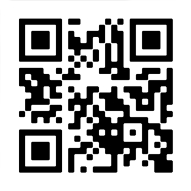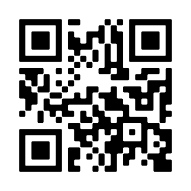Understanding the American Classroom Culture: What International Students Should Know
Studying in the United States offers international students a unique educational experience, especially when it comes to classroom culture. If you’re an F-1 visa student at Excel English Institute or planning to enroll, understanding how American classroom dynamics work can significantly improve your learning experience and help you adjust faster. This blog will break down some key differences and offer tips on how to thrive in an American classroom.
Active Participation Is Expected
In many countries, students are expected to listen quietly during lessons, but in the U.S., active participation is encouraged. Professors often expect students to ask questions, engage in discussions, and express their opinions. Class participation can sometimes even count toward your final grade.
Tip: Don’t be afraid to raise your hand and ask questions. Engaging with the material shows that you’re interested in learning, and it can help you grasp concepts faster. If you’re nervous about speaking in class, practice by joining local conversation groups or language exchanges around Dallas.
Collaborative Learning Is Common
Group work is a big part of the American classroom. You may be asked to work with your classmates on projects or presentations. This method encourages collaboration, teamwork, and different perspectives on a given topic.
Tip: Learn to work well in teams by understanding that everyone’s input is valuable. If you’re not used to group projects, Excel English Institute offers plenty of opportunities for you to practice collaborative learning, preparing you for the challenges of real-world teamwork.
Teachers Are Often More Approachable
In the U.S., the relationship between students and teachers is typically more informal compared to other countries. Teachers encourage students to call them by their first name and are often available outside of class for extra help. Many professors have office hours where students can drop by to discuss questions or seek guidance.
Tip: Don’t hesitate to reach out to your teacher if you need help. It’s considered normal and encouraged! Use office hours to clarify any concepts you’re struggling with. You can also improve your understanding by using additional online resources for ESL learners.
Critical Thinking Over Memorization
Unlike in some educational systems where rote memorization is the focus, American classrooms prioritize critical thinking. Students are encouraged to analyze, question, and interpret information rather than just memorize facts. Essays and assignments are often graded based on how well you apply concepts, not just how well you remember them.
Tip: Start developing your critical thinking skills by questioning the material you’re learning. Practice forming your own opinions and backing them up with evidence.
Grading Systems May Differ
In the U.S., grading is usually done on a letter scale (A, B, C, D, F), and each assignment contributes to your final grade. Some classes may also use a points system where assignments, tests, and participation each have specific weight in determining your overall performance.
Tip: Stay on top of your assignments, quizzes, and exams. Unlike some systems where a final exam determines most of your grade, in American classrooms, consistent performance throughout the course matters. If you’re having trouble managing your workload, tools like Google Calendar can help you stay organized.
Punctuality and Attendance Matter
Being on time and attending class regularly is crucial in the U.S. Absenteeism or tardiness can affect your grade, and in some cases, your visa status. Many professors take attendance, and missing classes could mean missing important material.
Tip: Make sure to arrive on time and be prepared for each class. In Dallas, traffic can be unpredictable, so plan accordingly, especially if you’re commuting. If you ever need to miss a class, make sure to notify your teacher and ask a classmate for notes.
TOEFL Exam Preparation
Preparing for attending university in the U.S.? You’ll need to know all about The Test of English as a Foreign Language (TOEFL), which is a standardized test measuring the English language ability of non-native speakers who aspire to enter a university in America.
Most English-speaking academic institutions accept the TOEFL test. The TOEFL exam measures four English language skills: reading, listening, speaking, and writing. The entire exam takes about four hours, and you’ll receive a score from 0-30 for each individual section and a total score of 0-120 for the entire test.
Tip: Taking a TOEFL Prep Course is a great way to gauge how ready you are to take the exam before officially sitting for it. Excel has an excellent TOEFL Prep Program available.
Prepare to Attend American University with Excel English Institute
Adapting to a new educational culture takes time, but by understanding these key differences, you’ll be better prepared to succeed in your academic courses here in the United States. ESL courses at Excel English Institute are a great way to prepare for your time in the American educational system.
Remember that American classrooms encourage open communication, critical thinking, and collaboration, so embrace the opportunity to grow in these areas.
Are you ready to start your journey in mastering English while immersing yourself in American classroom culture? Need to prepare for your TOEFL exam? Contact Excel English Institute to learn more about our ESL programs for F-1 students or start your application today.














